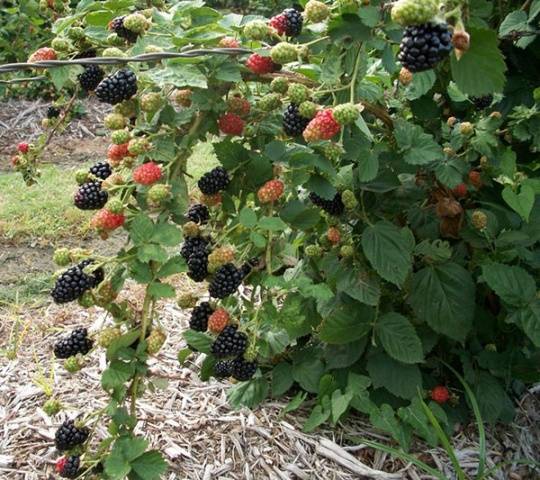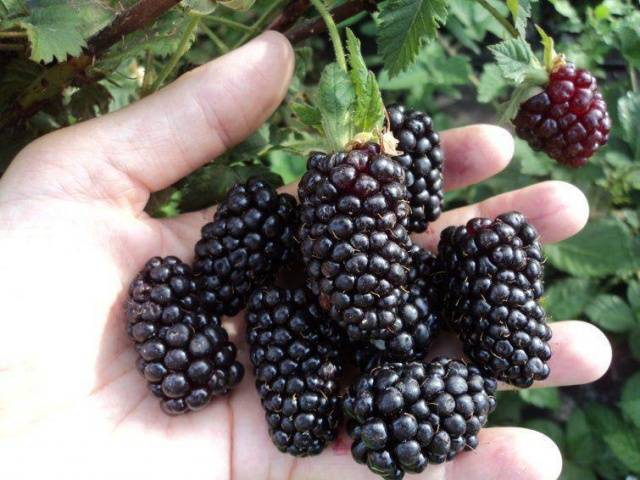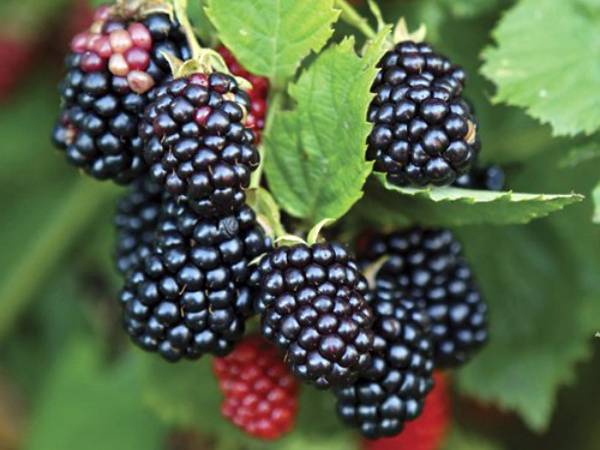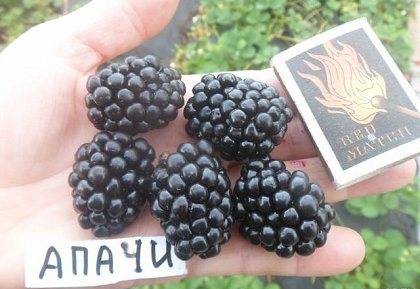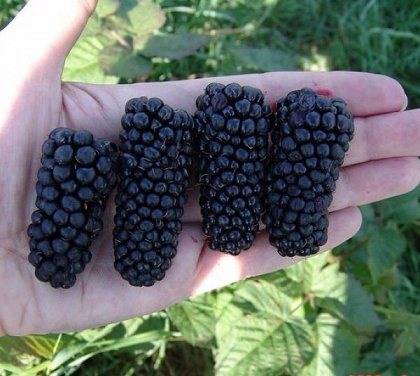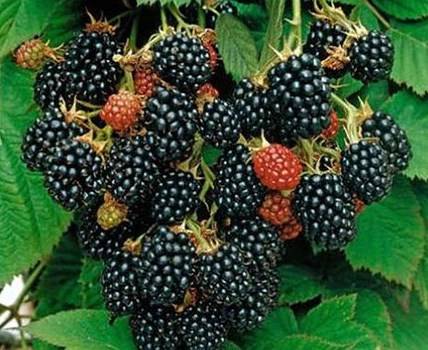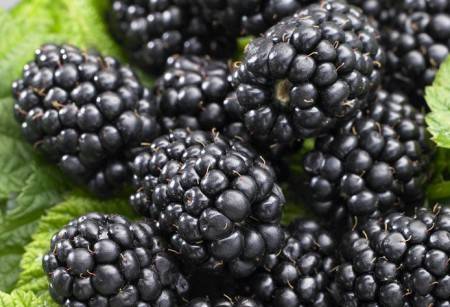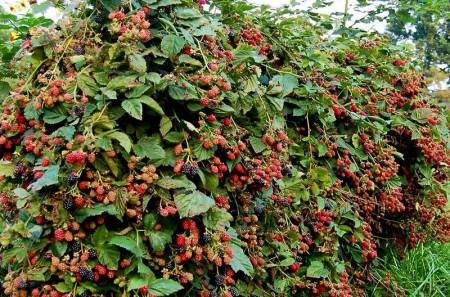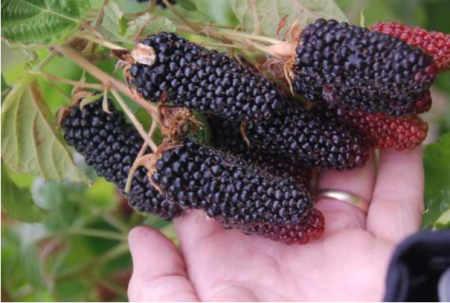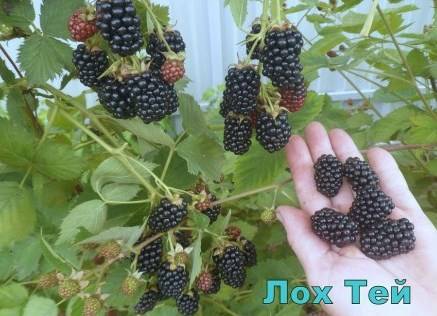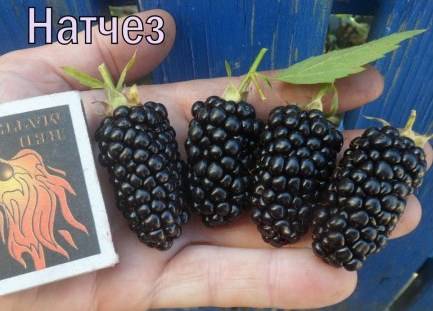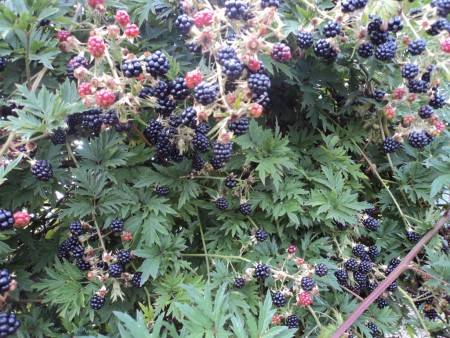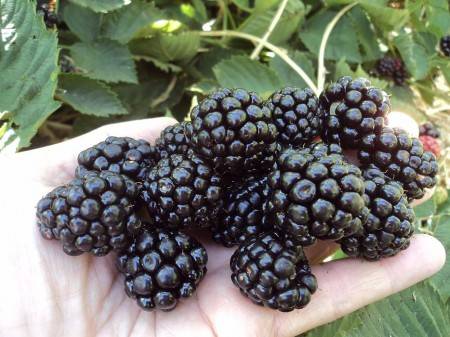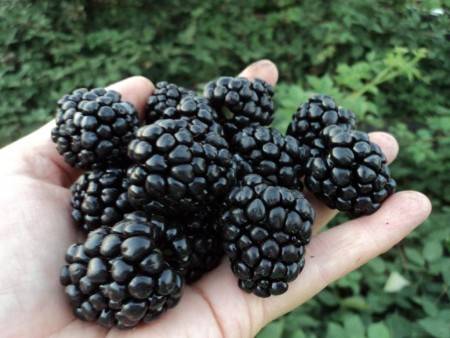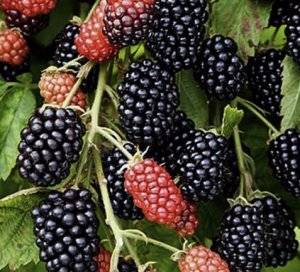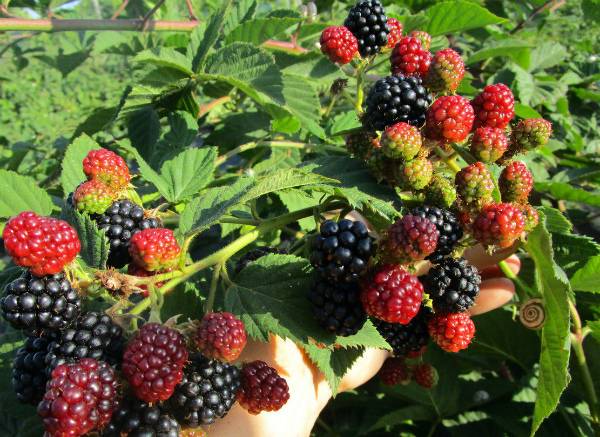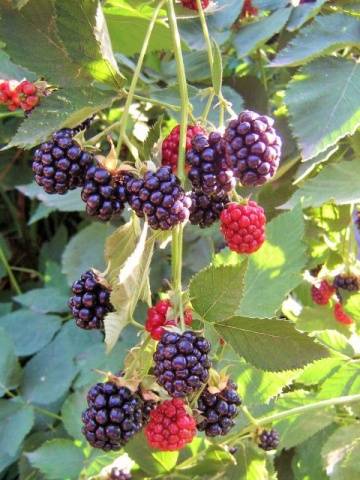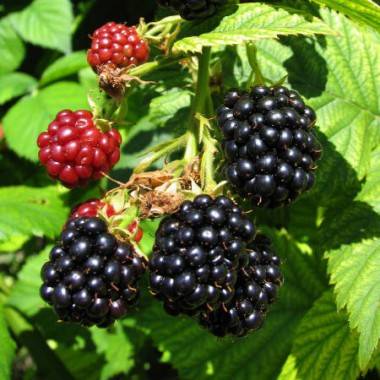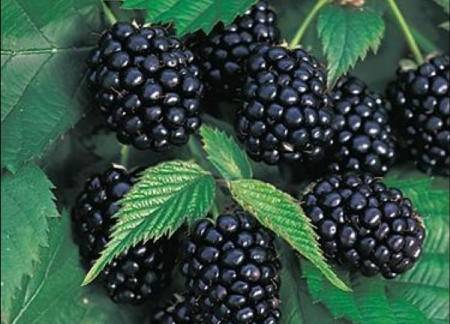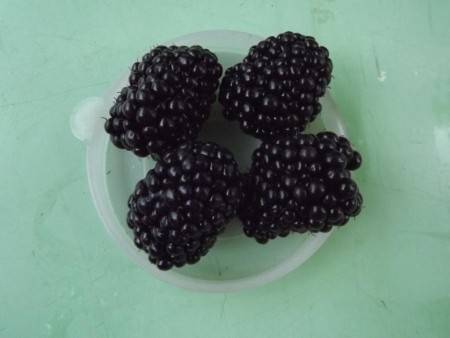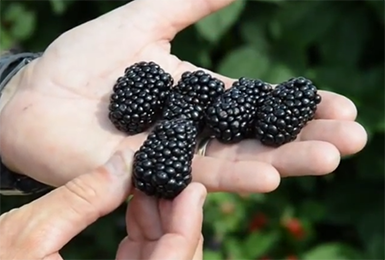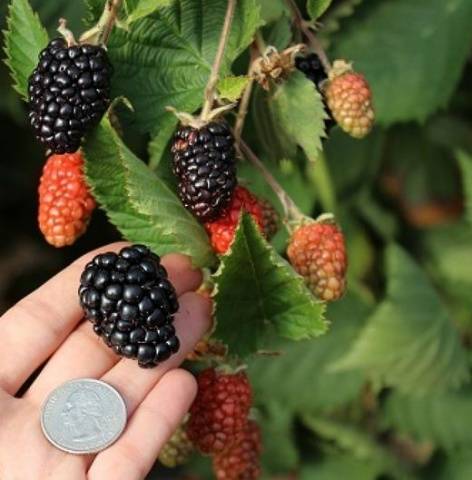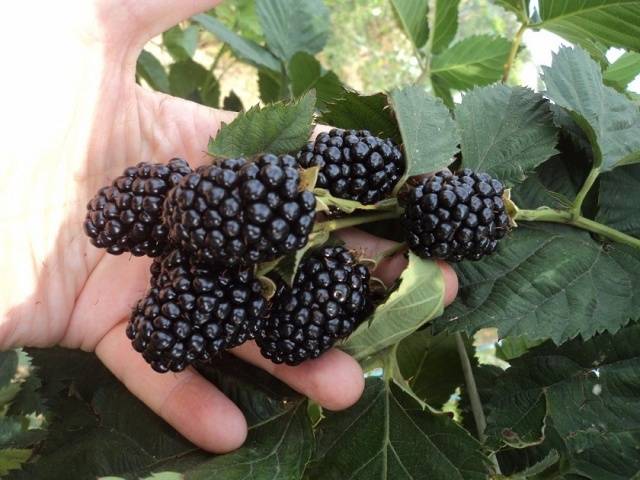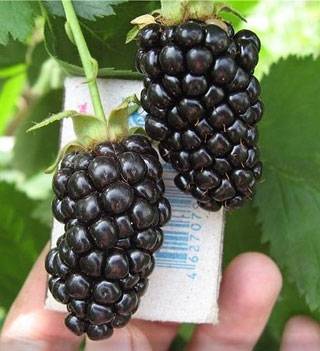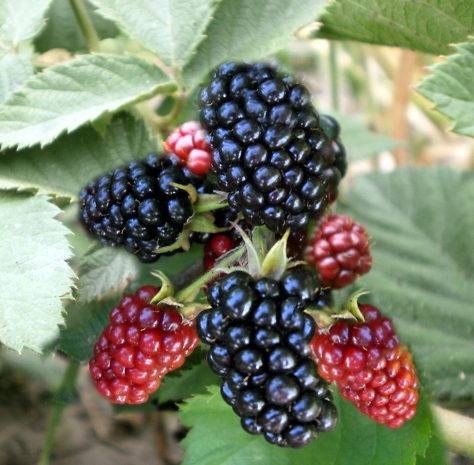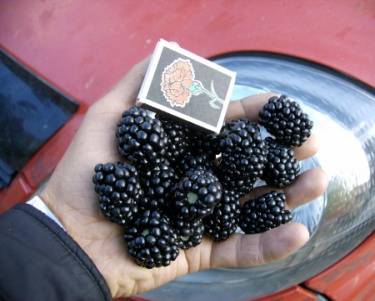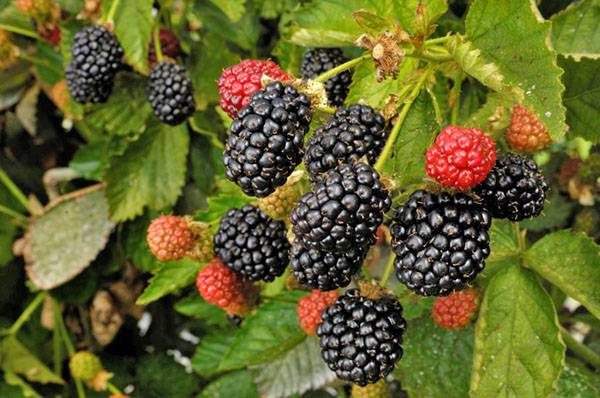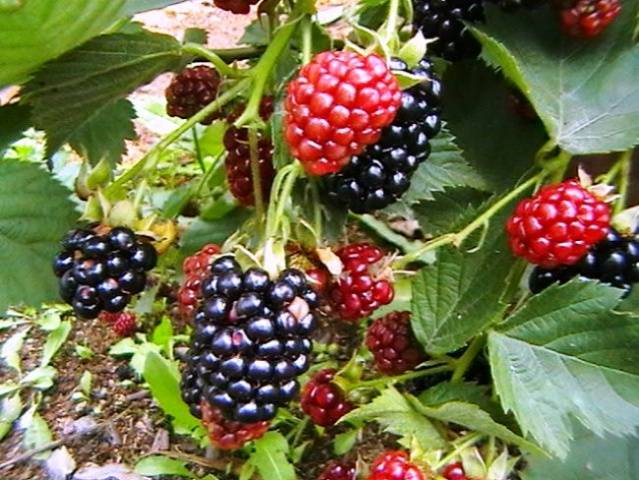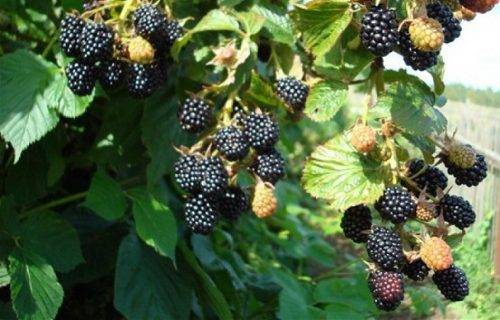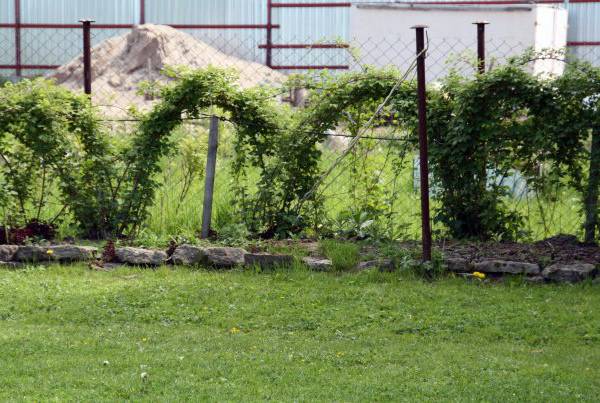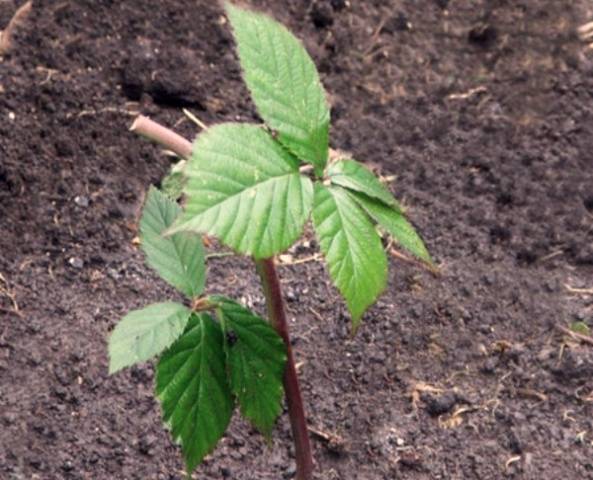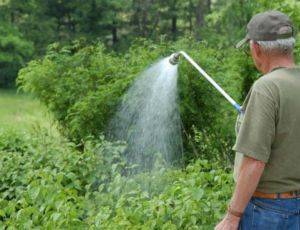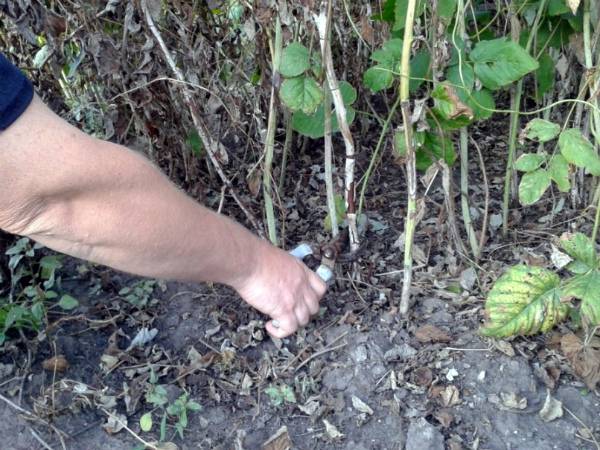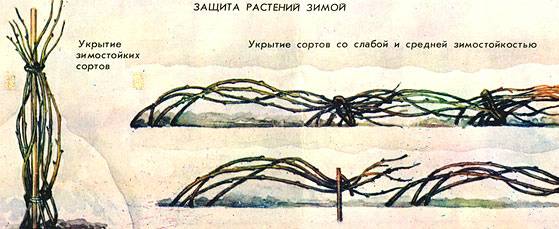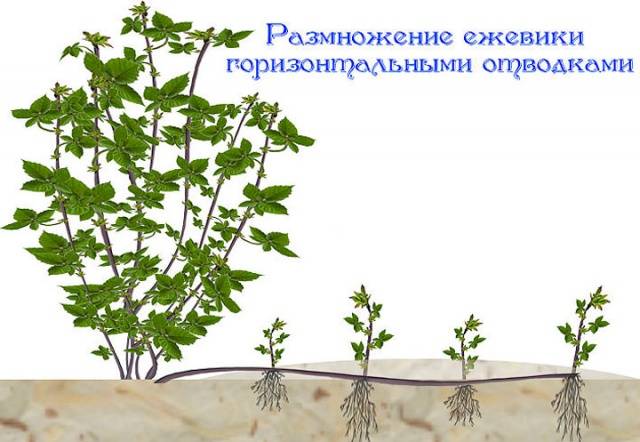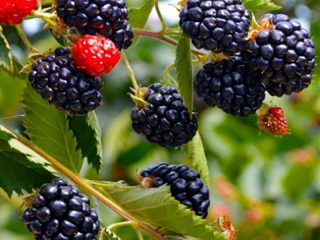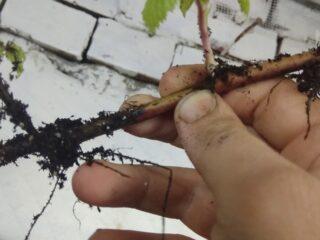Content
- 1 General description of thornless blackberry varieties and photos
- 2 Advantages and disadvantages of the studless blackberry
- 3 The best varieties
- 4 Repaired varieties of studless blackberry
- 5 Frost-resistant varieties of thornless blackberry
- 6 Early blackberry varieties without thorns
- 7 New blackberry varieties without thorns - what to expect from breeders
- 8 Rules for choosing the right variety of thornless blackberries
- 8.1 Blackberry varieties without thorns for Moscow region
- 8.2 Blackberry varieties without thorns for central Russia
- 8.3 Blackberry varieties for the Urals
- 8.4 Blackberries without thorns: planting and care
- 8.5 Recommended timing
- 8.6 Choosing the right place
- 8.7 Soil preparation
- 8.8 Selection and preparation of seedlings
- 8.9 Algorithm and scheme of landing
- 9 Blackberry care in spring, summer and autumn
- 10 Necessary activities
- 11 Reproduction of thornless blackberries
- 12 About diseases and pests: methods of control and prevention
- 13 Conclusion
- 14 Testimonials
Cultivated berry fields bring large yields and large fruits. Plants are easier to care for. On an industrial scale, non-prickly blackberries are not yet grown on the territory of our country, but the culture has already spread among private gardeners and summer residents. There are over 300 varieties adapted to the climate of different regions.
General description of thornless blackberry varieties and photos
The appearance of the studless blackberry is attractive. The openwork plant forms a large bush covered with bright green foliage with a jagged edge. Flowers appear around mid-June. The exact date depends on the variety: early, medium or late. The inflorescences are often white, but a pink or lilac hue may be present. Fruiting lasts from a month or longer, which also depends on the characteristics of the variety. The berries are green at first. When ripe, the fruits first turn red, then turn dark purple or black.
The root system of the thornless blackberry is buried up to 1.5 m, which allows the plant to survive the drought without reducing yield. The culture is considered two years old. The first year the bush grows fruiting shoots. In the second year, they bring berries, and in the fall, the branches that bear fruit are cut off. The replacement shoots are prepared for the next fruiting. In one place, a thornless bush can bear fruit for up to 10 years. Then the plant is transplanted to another place.
One-year old is considered to be shipless. repairing blackberry... The plant bears fruit on the branches of the current year. In the fall, shoots are cut at the root. In the spring, new branches grow and immediately begin to bear fruit.
According to the structure of the bush, the bushless culture is divided into two types:
- Kumanika - an upright plant with strong, weakly bending branches. Shoot length reaches more than 3 m. Kumanika sprouts a lot of young growth.
- Rosyanika - a creeping plant. Flexible stems are extended over 6 m in length. The dewdrop does not let young growth from the root. An exception may be damage to the root system. A young shoot can go from the cut root.
Semi-creeping varieties are less common. In such a culture, strong shoots with a height of about 50 cm grow evenly, then they begin to creep.
Advantages and disadvantages of the studless blackberry
To decide on growing a thornless variety, you need to know the advantages and disadvantages of the culture. Let's start our acquaintance with the positive qualities:
- a long fruiting period in most varieties stretches for more than two months;
- the thornless plant bears large berries;
- it is easier to pick fruits from a thornless bush;
- the plant is unpretentious in care, easily tolerates drought;
- you can collect new ripe berries every two days;
- remontant thornless varieties are easy to care for, since in the fall all branches are cut at the root;
- thornless varieties are more resistant to diseases.
The disadvantage of thornless varieties is the high cost of seedlings and less frost resistance.
The best varieties
More than 300 varieties are grown in our country. New cultures appear every year. Consider the best thornless blackberry varieties that have proven themselves from the best side.
Apaches (Apache)
The American thornless variety bears large berries weighing up to 11 g. The culture is of medium ripening. The bush is upright. The yield reaches 2.4 kg of berries per plant. Fruiting lasts up to 5 weeks.
Arapaho
The early culture of the structure of the bush belongs to kumanik. The berries ripen in July. Fruiting lasts about 4 weeks. The stems grow about 3 m long. The thornless variety can withstand frosts down to -24ABOUTC. Berries are large, weighing up to 9 g. From 1 bush, up to 4 kg of fruits are harvested.
Black Satin
One of the old thornless varieties of medium ripening brings up to 15 kg of yield per plant. Records were set up to 25 kg with good feeding. Berries of medium size, weighing up to 5 g. The structure of the bush is semi-creeping. The variety can withstand frosts down to -22aboutFROM.
Waldo
A high-yielding variety with a creeping bush structure yields up to 17 kg of berries. Fruit weight is about 8 g. Stems grow more than 2 m long. The thornless culture needs good shelter for the winter due to its moderate frost resistance. Ripening of the crop begins in July.
Chief Joseph
The thornless variety has a powerful, fast-growing bush. The length of the stems reaches 4 m. Ripening of berries begins in June. Fruiting lasts 45-50 days. The average fruit weight is 15 g, but there are large giants weighing up to 25 g. In the fourth year after planting, the yield of the variety reaches 35 kg per plant.
Doyle
The late-ripening thornless variety is famous for its high yield. You can collect up to seven buckets of berries from a bush. Fruit ripening begins in the second decade of August. The mass of the berry is about 9 g. Scourges grow up to 6 m long. The plant requires shelter for the winter.
Columbia Star
The thornless variety has not yet spread widely across the vastness of our country. Ripening dates are early. The berries grow large, weighing about 15 g. The structure of the bush is creeping. The length of the shoots reaches 5 m. The variety is suitable for southern regions, as it can withstand temperatures down to -14aboutFROM.
Loch Tei
A thornless variety with an average ripening period. The yield of the plant reaches 12 kg. Weight of one berry is about 5 g. The bush grows stems more than 5 m long. Average frost resistance. The plant can withstand up to -20aboutC. Shelter is required for the winter.
The video provides an overview of the variety:
Loch Ness
The mid-late thornless variety yields up to 25 kg of sweet and sour berries with a forest aroma. Fruit weight is about 8 g. The berry ripens in late July. Semi-growing plant with a stem length of up to 4 m. Average winter hardiness. For the winter, the lashes are covered.
Navajo
The late ripening thornless variety is famous for its good frost resistance. The bush is erect in shape. Fruiting lasts from August to September. The yield reaches over 500 fruits per plant. The average weight of one berry is 5 g.
Natchez
The thornless variety will appeal to lovers of early berries. The plant brings up to 20 kg of large fruit, weighing 12 g. Ripening begins in June. The duration of fruiting is 1.5 months.The structure of the bush is erect with a transition to creeping shoots. The length of the stems reaches 3 m. Winter hardiness is average. For the winter, lashes are sheltered in cold regions.
The video provides an overview of the variety:
Oregon Thornless
The late-ripening thornless creeping variety brings up to 10 kg of berries per plant. Fruit ripening begins in August. The berry mass is about 9 g. Thornless stems grow more than 4 m long. Blackberries are considered frost-resistant. The plant can withstand temperatures as low as -29aboutC. When grown in the middle lane for the winter, shelter is necessary.
Osage
Gardeners fell in love with the bushless blackberry because of the good taste of the berries. This is the only advantage of the variety. Low yield - maximum 3 kg of fruits per plant. The average weight of the berry is 6 g. Ripening begins in July. The bush is erect, the height of the stems reaches 2 m. Frost resistance is weak. Blackberries can withstand temperatures as low as -13aboutFROM.
Ouachita
An early besshorny variety pleases with a ripe berry in June. An adult bush can bring up to 30 kg of harvest. Fruiting lasts up to two months. Scourges of an erect bush grow up to 3 m long. Winter hardiness is weak. Blackberries can withstand frosts down to -17aboutFROM.
Polar
The thornless Polish variety grows in its homeland without shelter. Blackberries can withstand frosts from -25aboutFrom to -30aboutC, but under such conditions, a fivefold decrease in yield is observed. Ripening of berries is late. Fruiting lasts from August to September. The berries are large and can be transported. An upright bush throws out shoots up to 3 m long.
Smutsttstem
The old American hybrid is the firstborn of the thornless varieties. The half-growing bush grows lashes 3 m long. The mass of berries varies from 5 to 10 g. The yield of blackberries reaches 25 kg per plant. Average frost resistance.
Hull Tornless
American thornless hybrid of blackberry bred for warm regions, where in winter frost is a maximum of -8aboutC. The yield reaches 40 kg of large berries per plant. The bush is semi-creeping. The length of the lashes reaches 5 m.
Chachanska Bestrna
The variety is considered early maturing, as the berries begin to ripen in early July. The yield of blackberries reaches 15 kg per plant. Fruit weight is about 14 g. The thornless plant has a semi-sheathing bush shape. The length of the shoots is 3.5 m. The winter hardiness of the blackberry is good. The plant can withstand -26aboutC, but they cover him for the winter.
Cherokee
The variety is considered thornless, despite the rare presence of almost imperceptible thorns. The yield is 15 kg per plant. The average weight of the berry is 8 g. The bush is spreading, has a decorative structure. Average frost resistance.
Chester
The late-ripening thornless old variety brings a yield of delicious berries up to 20 kg per plant. The average weight of one fruit is 8 g. Ripening begins in the first days of August, sometimes at the end of July. The semi-mature plant grows stems up to 3 m long. Blackberries can withstand frosts down to -26aboutFROM.
Repaired varieties of studless blackberry
The difference between remontant blackberry varieties is the appearance of berries on the shoots of the current year. Gardeners have learned to get two crops from a crop, which depends on the method of pruning:
- To get one harvest, in the fall, all branches of the remontant blackberry are cut to the root. In the spring, new fruiting shoots grow.
- To obtain two harvests in the fall, only old, fruiting shoots are cut out. Young shoots of blackberries are bent to the ground and covered. The berries on these branches will appear at the end of July. After harvesting, the lashes are cut out and in August new fruits will appear on the stems of the current year.
Repaired blackberry varieties are more suitable for southern regions. In the northern regions, the berries do not have time to ripen.
A prominent representative of the remontant group is Freedom, the studless blackberry. The bush can withstand frosts down to -14aboutC. The yield reaches 7 kg per plant. The mass of the berry is about 9 g.
The studless remontant variety Treveller brings up to 3 kg of yield per bush.Late fruiting begins on 17 August. An upright bush bears fruit weighing 8 g.
Frost-resistant varieties of thornless blackberry
Tornado blackberries are considered frost-resistant if they withstand a temperature drop of about -20aboutC. However, in cold regions, all varieties are subject to winter shelter. From the presented review, one can single out Navajo, Loch Ness, Black Satin.
Early blackberry varieties without thorns
Early blackberries should be expected to harvest in late June - early July. Of the studless varieties considered, Natchez and Arapaho are the brightest representatives. Early blackberries are suitable for growing in cold regions, as the plant has time to give up the entire crop.
New blackberry varieties without thorns - what to expect from breeders
Breeders are constantly developing new varieties of the thornless blackberry. In 1998 the Polish culture Orcan "Orcan" was registered. The late-ripening variety bears large berries in August. The bush does not allow root growth. In Europe, blackberries are covered with light material for the winter.
Another novelty is the Rushai "Ruczai" blackberry. Polish breeders have developed a high-yielding, vigorous shrub that does not let root growth. Medium-sized berries begin to ripen in the second decade of August.
Rules for choosing the right variety of thornless blackberries
To grow a studless blackberry on your site, you need to choose the right variety. First of all, frost resistance and ripening times are taken into account. It depends on these factors whether the blackberry is suitable for the climatic conditions of the region.
After choosing a suitable group, you can already look at the yield, berry size, bush structure and other characteristics of the variety.
Blackberry varieties without thorns for Moscow region
It is better to grow varieties that are adapted to local weather conditions in the Moscow region. Regardless of frost resistance, the blackberry will have to be covered for the winter. The plant is endangered by snowless winters, and such are observed in the Moscow region. From the considered list of varieties in a cold region, you can grow the Apache and Black Satin thornless blackberries.
Thornfree, the thornless blackberry, has proven itself well in the Moscow region. Rosyanika bears fruits weighing 7 g. Vigorous bushes with lashes up to 5 m long.
Blackberry varieties without thorns for central Russia
There are also adapted varieties for growing in the middle lane. A prominent representative is Doyle's thornless blackberry. The crop bears large berries weighing 7 g. The plant easily tolerates cold and drought, but abundant watering increases the yield.
The thornless blackberry variety Ruben has taken root well in the middle lane. The remontant culture has a compact bush up to 2 m high. Berries ripen from August to September. Fruit weight is about 10 g.
Blackberry varieties for the Urals
For the successful cultivation of thornless blackberries in the Urals, not only frost-resistant varieties are chosen, but also those capable of withstanding temperature extremes in early spring. The studless cultures of Loch Ness, Black Satin, Waldo have adapted well.
The best variety for the Urals is Polar. Thornless blackberries bear ripe berries in the third decade of June. The yield reaches 5 kg per bush. The plant can withstand frosts down to -30aboutFROM.
Blackberries without thorns: planting and care
The agricultural technique of the thornless blackberry is used the same as for the thorny relative. In the second year after planting the seedling, it is recommended to pluck all the inflorescences from the fruit branches in order to enable the root system to grow.
Recommended timing
In cold regions, spring planting of thornless blackberries is preferable, falling in April - early May. In the south, the seedling will have time to take root before winter with an autumn planting. Usually, disembarkation is done in September.
Choosing the right place
For brambleless blackberries, choose a bright area well-lit by the sun. It is important to protect the plant from winds, strong gusts of which are often observed in the Moscow region. It is optimal to plant bushes along the fence, retreating at least 1 m.
Soil preparation
A bed for planting a studless blackberry is dug to a depth of 50 cm, humus or compost is added. In addition, before planting seedlings, a bucket of humus mixed with fertile soil, potassium fertilizer and superphosphate is introduced into each hole - 25 g.
Selection and preparation of seedlings
When buying, choose seedlings with a developed root system, two twigs, where live buds are present. Before planting, the plant is dipped in warm water by its roots. The procedure accelerates the growth of root shoots.
Algorithm and scheme of landing
The optimum planting depth of a blackberry seedling is 50 cm. A hole with a fertile mixture of soil and humus is watered. After planting the seedling, another watering is performed, after which the soil is mulched. The aerial part is shortened, leaving twigs 30 cm high.
The planting pattern depends on the variety of the thornless blackberry. Between compact bushes they maintain a distance of up to 1.5 m. For creeping highly growing varieties, a gap of at least 1.8 m is maintained between the plants. The row spacing is from 2 to 3 m.
Blackberry care in spring, summer and autumn
To get a good harvest, the thornless blackberry needs care during the entire growing season.
Principles of growing thornless blackberries
All studless blackberries, regardless of the growth of the bush, need a garter to support. It is optimal to install trellis made of posts and wire. To increase the yield, top dressing is applied, a bush is formed, the soil is loosened and mulched. In the fall, superphosphate and ash are necessarily introduced into the soil. In the spring, the bushes are fed with compost and ammonium nitrate.
Necessary activities
The following actions are distinguished from the mandatory measures for caring for the thornless blackberry:
- In the fall, blackberries are provided with shelter, which is removed in the spring immediately after the snow melts.
- The soil around the bushes floats from weeds, loosened after each watering, mulch to retain moisture.
- Watering is carried out once a week, and then while the berries are being poured. Long roots themselves get moisture from the depths of the earth. Spring and autumn watering is required to charge the bush.
- Top dressing cannot be done with fresh organic matter. Rotted manure works well. In the spring, nitrogen-containing fertilizers are applied to stimulate the growth of the bush. Suitable for 20 g of ammonium nitrate per 1 m2 beds. During fruiting, phosphorus is introduced, closer to autumn - potassium.
Pests rarely visit blackberries, but when they appear, plantations are sprayed with chemicals.
Pruning thornless blackberries in spring
Only sanitary pruning is done in spring. Remove old, fruiting shoots if they were not cut out in the fall. Additionally, all frozen branches without buds are cut off. When pruning, they do not leave hemp so that pests do not start. Repaired thornless varieties are not cut off in spring, since all branches are cut off at the root since autumn.
More information about pruning thornless blackberries is shown in the video:
Preparing for winter
After the autumn pruning, the thornless blackberry is prepared for wintering in cold regions. The lashes are removed from the trellises, tied with twine, pinned to the ground with wire. Erect bushes have fragile shoots. To prevent them from breaking, loads are tied to the tops since autumn. Under the weight, the branches of the blackberries tend to the ground, and they can be easily covered.
Spruce branches are ideal for warming bushes of thornless blackberries. The thorns prevent rodents from getting started. You can use a non-woven fabric paired with a film.
The video tells about the correct hiding place for blackberries:
Reproduction of thornless blackberries
You can independently propagate a thornless blackberry in the following ways:
- Seeds. A difficult method that does not preserve the varietal characteristics of the culture. Seeds do not germinate well.
- Layers. In August, the lash is bent to the ground, covered with soil, leaving only the top. The following spring, the plants are cut from the mother bush and planted.
- Cuttings. Twigs 15–20 cm long from lignified shoots germinate best in moist soil. You can cut green cuttings from the tops, but you will have to cover the planting with a greenhouse.
- Air layering. The vaccination site is wrapped with a piece of film covered with earth. The primer is constantly moistened from a syringe with a needle. After a month, a stalk will appear with a root that can be detached.
Spineless blackberries are not propagated by offspring, since these varieties do not allow young growth. The option of dividing the bush or root cuttings is possible, but the process requires accuracy and is difficult for novice gardeners.
About diseases and pests: methods of control and prevention
Summer residents treat diseases and destroy pests on the blackberry bushy with the help of folk remedies. The list of actions is presented in the table. The main enemy of the culture is white bloom or mite. From store-bought drugs they use "Skor" or "Saprol".
Conclusion
Thornless blackberries are not as popular as raspberries, but they have already appeared among many domestic gardeners. The culture brings a huge harvest of delicious berries and does not require super-complicated care.
